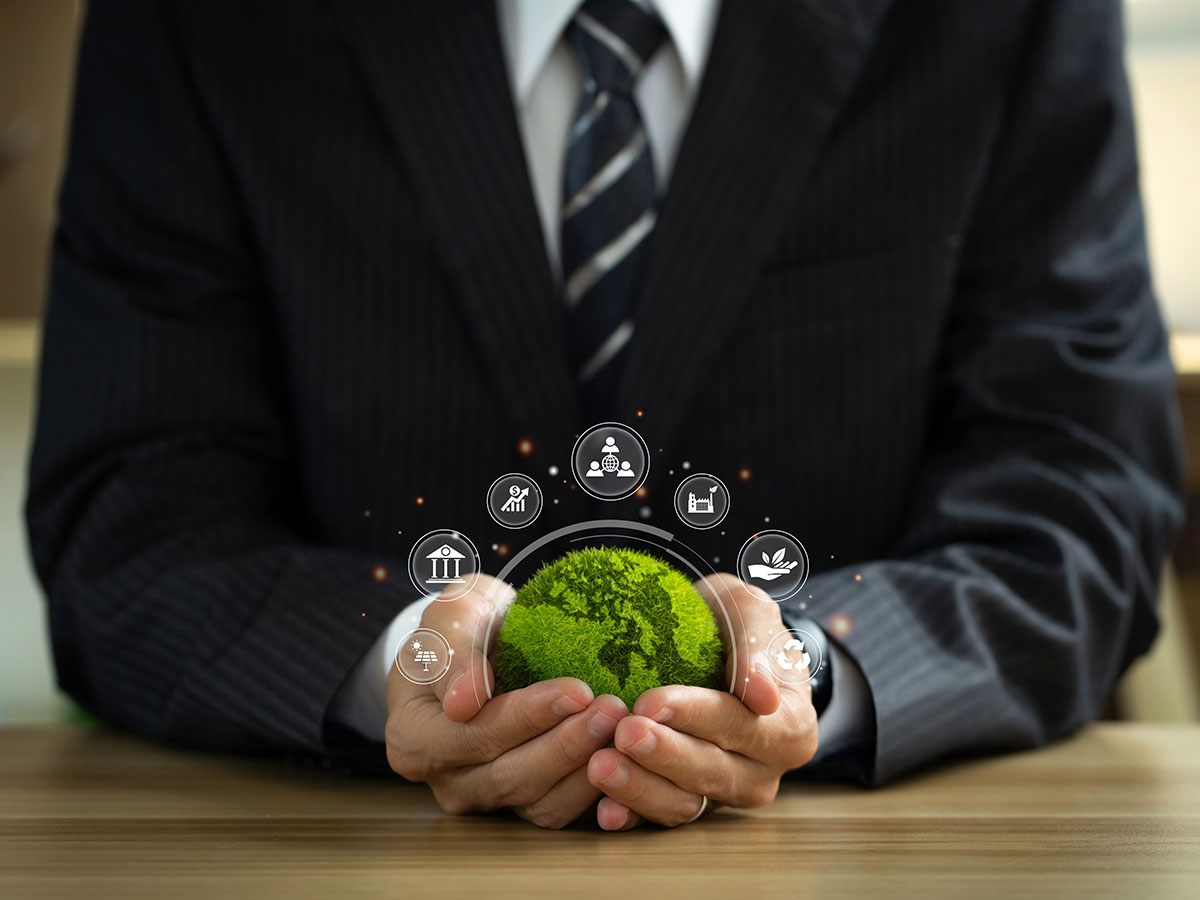Three steps towards sustainable impact at scale

[CAPTION]By embracing experimentation, aligning efforts with customer priorities and sharing value among stakeholders, companies can drive positive change while securing long-term success.
Image: Shutterstock[/CAPTION]
In today's rapidly evolving business landscape, the pursuit of sustainability has become increasingly vital. With consumers, investors and employees placing greater emphasis on responsible corporate behaviour, businesses must navigate this shift strategically.
Using research on the agrifood sector, which is a major contributor to greenhouse gases, resource depletion and social inequities, I outline three steps that can empower businesses to achieve real, sustainable impact at scale, driving positive change profitably while meeting stakeholders’ expectations.
_RSS_A key mantra of business is to focus on and understand your customers. This mantra applies equally even as firms aspire to create genuine sustainable impact at scale. As we discuss below, the key to effecting real change that moves the business towards driving both social impact and profit lies in understanding what your consumers really want.
1. Explore, experiment and innovate
Companies can benefit from developing social impact projects in isolation first, in order to give them the space and freedom to thrive. This allows organisations to solve societal problems and then search for opportunities to profit from successful schemes.One way to rapidly scale social impact initiatives is by strategically using funds that have no expectation of a return on investment. For instance, Indian multinational Mahindra Group used corporate social responsibility funds to improve water availability in a water-starved district of 32 villages in Madhya Pradesh, central India. By enhancing local farms’ access to water and to information about better agricultural practices, the project led to a threefold growth in per capita income. This in turn enabled the farmers to pay for Mahindra’s products and services and increase their income further.
To date, the project has brought Mahindra a return on investment comparable to any for-profit initiative. The success hinged on Mahindra using CSR funds to empower communities, not just providing handouts. This created a new customer base and helped to fostered stronger levels of trust through transparent cooperation.
2. Focus on customer needs
Once you have a project with potential, the next step involves understanding your customer's needs. Specifically, which of the 17 Sustainable Development Goals (SDGs) resonates most with your key customers and how does your narrative align with their priorities? If your SDG priority is different to the consumers’, they are not going to care about your project.This customer-centric approach ensures that your efforts appeal to the target audience, increasing the potential for positive impact and market traction. Swedish oils and fats producer AAK did exactly that with its CSR project supporting women shea nut collectors in West Africa.
The project, called Kolo Nafaso, helped AAK establish a direct link with these producers to improve productivity and ensure the collectors received fairer compensation. Through the scheme, AAK looked to not only impact the lives of the women shea collectors but to also address issues related to deforestation, water usage and their carbon footprint, all while enhancing the quality and supply of raw materials.
As a CSR project, Kolo Nafaso was initially focused solely on growing the number of participating women. However, AAK soon realised that to expand the project further it needed to increase demand for its product.
AAK sold to a wide range of large corporations including Ferrero, Mars, L’Oreal and Burt’s Bees, each of which was looking to address different SDGs through their sustainability efforts. By analysing customer press releases, stakeholder magazines, impact studies and annual sustainability reports, AAK was able to identify the different SDGs that different clients were targeting as part of their own sustainability messaging.
With this insight, AAK promoted greater collaboration between members of the C-suite, the marketing team and those working on the direct trade programme. Those on the ground in West Africa would identify the different SDGs the project could potentially address. The marketing team would then ensure that these different ‘good news’ stories were communicated with the relevant customers.
For example, the project promoted the planting of shea trees to create future supply, which spoke directly to a large customer in the cosmetics space that was concerned with mitigating deforestation. For another customer that made confectionery, AAK emphasised the positive stories of women’s empowerment resulting from the project’s overarching ambition to cut out middlemen and work directly with female harvesters.
Focusing on issues that resonate with customers is key for companies looking to maximise the impact of their sustainability initiatives. Typically, the most important customers will care deeply about a specific set of SDGs. By incorporating these priorities into programmes, companies can create initiatives that gain real momentum and scale. It’s no surprise that most well-funded projects have multiple components that address multiple needs.
Also read: Ethical dilemmas in business: Balancing profitability, corporate social responsibility
3. Create value for all stakeholders
Securing buy-in from the main stakeholders is critical for any programme to succeed. After understanding which SDGs are important to customers, the next step is to identify how these SDGs can be addressed in a way that creates value for all the stakeholders.For AAK, that meant building on its connection with the women harvesters to fine-tune initiatives to match specific customer priorities. Taking this approach ensures that customers are engaged and willing to further develop the partnership beyond the merely transactional. These deeper collaborations enabled AAK to scale the Kolo Nafaso programme without having to rely solely on their own investments.
For example, the confectioner mentioned above partnered with AAK to roll out a 10-year financial literacy project for 13,000 women in Ghana – a strong story that the customer could then share with its shareholders and customers.
Another AAK customer was keen to address SDG 15: Life on Land and efforts to reduce biodiversity loss. In collaboration with the customer, AAK developed a beekeeping initiative with its network of shea collectors. This helped the women gain an additional source of income through the sale of honey and beeswax, with the added benefit of the bees increasing the productivity of their farms. AAK’s customer, meanwhile, burnished its sustainability record. AAK itself further strengthened its relationship with its shea harvesters.
It should be noted that in cases where AAK found no direct connection between specific customer aims and the needs of the primary stakeholders of the CSR programme, it chose to walk away from potential partnerships rather than run the risk of developing initiatives that had no meaningful impact.
Today, Kolo Nafaso benefits more than 300,000 women and their households across West Africa. As a result, AAK is able to offer a better, traceable product. It also has higher pricing power and stronger relationships with key stakeholders, including local governments, customers and investors.
By working with customers, staff and suppliers as full partners in the process, AAK made decisions that considered the value created for all stakeholders. Essentially, ensuring greater control over quality, ethics and impact throughout the chain streamlined operations, while creating value for all. What’s more, the strength and depth of the stakeholder partnerships have created a barrier to entry for potential competitors.
Long-lasting solutions
The journey towards sustainable impact demands courage, creativity and commitment from businesses. By embracing experimentation, aligning efforts with customer priorities and sharing value among stakeholders, companies can drive positive change while securing long-term success.As we look to the future, it is important to recognise the profound rewards of sustainability, not only in terms of profitability and market differentiation but also in the enduring impact we leave on the world.






